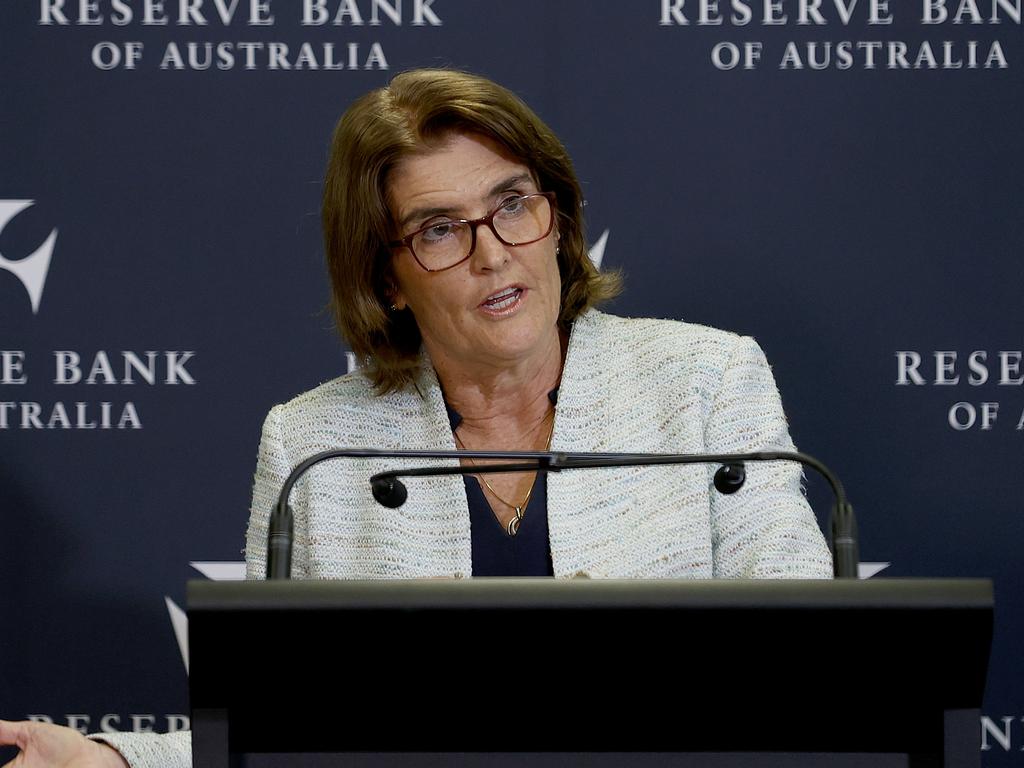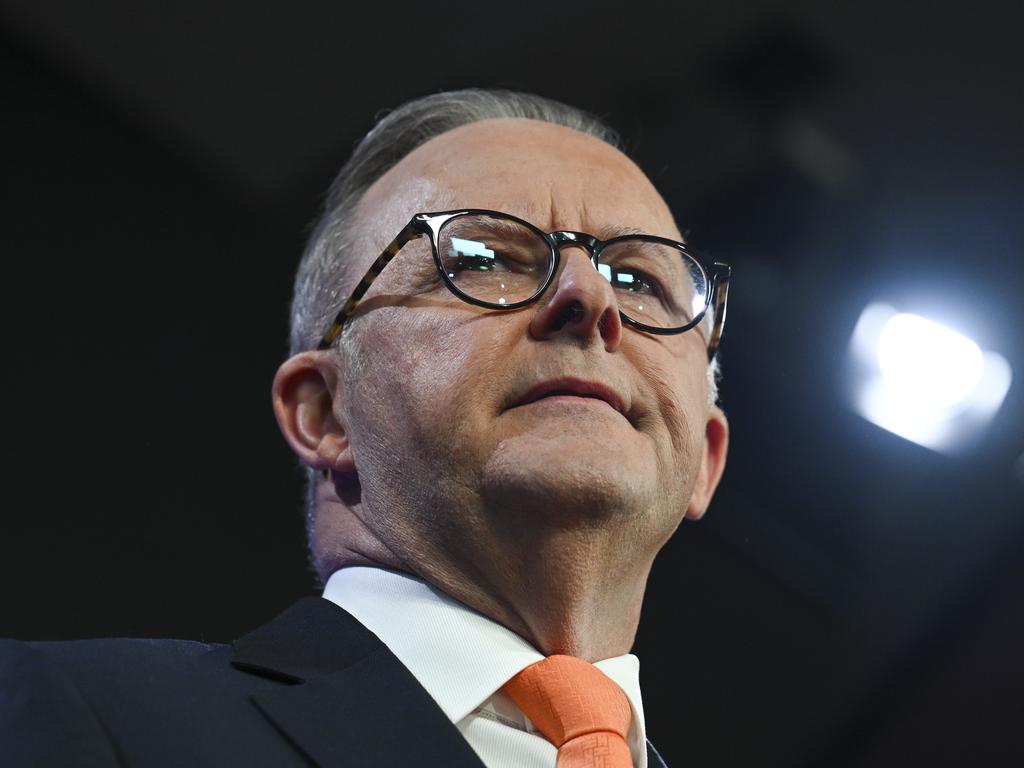Too loose? Too tight? Can Labor and the RBA get it just right?
The Albanese government and central bank could easily crash on the narrow road to full employment.

There are 1.2 million more people employed now than in February 2020; the jobs boom has been stoked by crisis-era ultra-low interest rates and a fiscal splurge, unleashing pent-up demand from lockdowns. Soon after the border was reopened to foreigners, a migration boom – mainly students, backpackers and temporary workers who had their visas extended – delivered a huge supply of young workers, pushing up spending and demand for rental properties.
We’ve been over-performing on most metrics, with Canberra collecting a mountain of income tax, while an excess of demand over supply has been a factor adding to inflation. Officials are determined to preserve the job gains of recent years while trying to bring inflation back to the midpoint of the 2-3 per cent target zone.
Treasury secretary Steven Kennedy told Senate estimates this week unemployment could settle “at levels previously thought unsustainable” and we might be in a world where the jobless rate could rest with a four in front of it.
“There remains a rare opportunity to sustain the economy closer to full employment than has been the case for many decades,” Kennedy said. This “would be life-changing for many disadvantaged Australians”, he added, especially young people.
But getting there depends on the government and the Reserve Bank board, of which Kennedy is a member, “making the right policy choices”. Governments spend money on education and training, as well as on wage subsidies to employers and labour market programs targeting the long-term unemployed or workers displaced because of upheavals.
For all the “micro” interventions, a labour market specialist told Kennedy, the best policy to get people into jobs was to keep the economy humming. That is, smoothing the business cycle through timely moves in Canberra’s taxing and spending, and working in tandem with the RBA as it manages short-term bumps.
Of course, there are lots of things governments can do to improve the economy’s supply-side; the functioning of markets it regulates, providing infrastructure, and making its systems simple and efficient. But it’s the “macro”, big-picture stuff, growing the economy to its potential, that offers the best opportunity for prosperity for all.
Kennedy and RBA governor Michele Bullock claim we’re on the “narrow path” to success, with the central bank board prepared to take a “measured pace” of returning to low inflation to get an optimal result on economic growth and employment. How risky is going slower than our peers?
Well, some in the community might believe the RBA was not serious about getting inflation back to target, given it will have been adrift for four years by its scheduled return to inside the band by the end of next year, which could change inflation psychology and feed into price and wage pressures.
As it states in its latest quarterly update, the RBA historically has set monetary policy to achieve both low and stable inflation and full employment. The RBA review said this “dual mandate” needed to be more explicit. In December, Jim Chalmers and the RBA board agreed to new ground rules, with the bank now obliged to be more upfront about how it is going about its business on both fronts. Across the past two weeks officials have been providing a lot of commentary on full employment in text, set pieces and federal parliamentary appearances before both houses.
Officials argue “full employment is a moving target”. There’s no single number that tells the complete story; rather, it’s reflected in a suite of information, including wages, labour demand and supply, and the balance between them or “spare capacity”.
This last one is the RBA’s primary focus, with several indicators in the frame. A dashboard now used in presentations by officials shows the labour market is getting looser, moving towards a more sustainable level of employment. Bullock says while the RBA’s two objectives are mostly complementary, “over the longer term, low and stable inflation is necessary to achieve full employment”. It’s the bedrock, officials explain, “creating favourable conditions for households and businesses to make sound decisions about how to spend, save and invest”.
“So far, we are observing that labour market conditions are easing, although they remain tighter than we think is consistent with low and stable inflation,” Bullock told a parliamentary committee a week ago.
“Our forecasts are for employment to continue to grow but more slowly than over the past few years. But these outcomes are dependent upon inflation returning to target in a reasonable timeframe and inflation expectations not drifting up.
“If that were to occur – inflation expectations drifting up – it will be much more costly in terms of employment to get inflation down.”
Is there a magic number for full employment? Not quite, and Bullock doesn’t want people to get fixated on one, as if once that’s reached the board will cut interest rates. That may sound like wanting wiggle room to claim mission accomplished; it is and it isn’t. She wants to consider the total picture of the balance between demand and supply in the economy.
“I wouldn’t like to get too het up on particular numbers,” Bullock told the house economics committee. Last year, when she was Philip Lowe’s No. 2, Bullock riled unionists when she warned unemployment would have to rise from the then 3.6 per cent to 4.5 per cent to tame inflation.
We’ve heard a lot about the “non-accelerating inflation rate of unemployment” or NAIRU, which the RBA believes is around 4.25 per cent; other economists claim it could be a little lower. But the number-crunchers need something to plug into their models, so that’s what they’ve gone for. Bullock told parliament the labour market “is still tight at an unemployment rate of under 4 per cent”. She said signals such as employers finding the right skills in their workers and robust wage rises were evidence there was some tightness in the labour market. “These are all indications that we’re below this sustainable full employment,” she said.
Bullock declares the RBA will play its part by trying to minimise the fluctuations around what it thinks is sustainable full employment. “But we can’t actually move the structural rate of unemployment ourselves,” she told the committee. “That has to be done by government policy.”
The government’s Working Future white paper on jobs and opportunities, published last September, was focused on those broader issues, with an emphasis on disadvantaged workers who have been left behind in the boom. Such interventions take time to bear fruit. There was no specific full employment target in the white paper.
University of Melbourne Truby Williams professor of economics Jeff Borland believes a specific target for full employment, set near the 50-year unemployment lows of 3.5 per cent achieved last year, is consistent with the RBA’s price inflation objective, and that having a numerical target would be good for accountability and messaging.
“It’s implicit that the RBA has a view on what full employment is, given that the quarterly statement says the labour market is tight relative to full employment,” Borland tells Inquirer. “So it would be good for transparency to nominate what amount of spare capacity it believes is sustainable without resulting in excessive wage growth.”
Borland says the RBA’s approach of using a dashboard of indicators to judge spare capacity in the labour market is an important development. He emphasises the importance of broader indicators, combining unemployment and underemployment, known as labour under-utilisation. That measure rose to 10.7 per cent in January, compared with 13.9 per cent on the eve of the pandemic in early 2020.
In November 2022, after the economy roared out of lockdowns, the under-utilisation rate dropped to a four-decade low of 9.3 per cent.
Borland calculates at the end of December the civilian population 15 years and older was 100,000 higher than if the trend established in the five years before the pandemic had continued. He argues migration may have sustained a high rate of employment growth out of the pandemic “by relaxing the labour supply constraint”.
On Thursday economists said the economy was responding in textbook fashion to the RBA’s 13 cash-rate hikes. Naturally, the Treasurer put his gloss on the news as well. “Even as the labour market softens in ways that we have anticipated, we do start from an especially strong base,” he said.
Right now, employers are cutting back workers’ hours rather than letting people go. The RBA expects the jobless rate to climb to 4.3 per cent by December, although some see that as optimistic; unemployment will climb higher because the economy won’t be able to produce the jobs to match labour force growth, driven by the record net inflow of migrants. Once inflation popped, the RBA had to move; the demand for labour could not be sustained. Well, as poets and football superstars have mused, it was beautiful while it lasted.







The post-pandemic magic ride is ending as the economy slows and the hiring impulse of employers fades. Last month, unemployment rose to 4.1 per cent, the first time in almost two years the headline rate did not begin with a three.